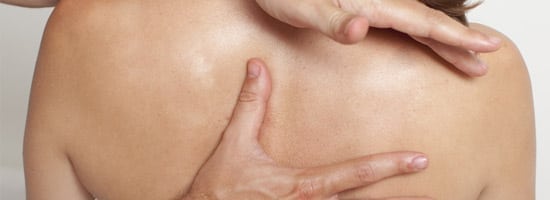
All About Spinal Stenosis
Most common in adults 50 and older, spinal stenosis is a progressive narrowing of the spinal canal. Over time, this narrowing may place pressure on nerve roots, resulting in a “pinched nerve.” The discomfort from this nerve compression is called radiating pain, which is often felt as numbness or tingling sensations in the legs, hips, thighs, or arms, depending on the location of the affected nerve.
Types of Spinal Stenosis
Spinal stenosis can occur anywhere along the spine. When it affects the lower back, it’s called lumbar spinal stenosis. If the space around the seven vertebra in the neck becomes narrow, it’s referred to as cervical stenosis. Affecting the middle and upper portion of the spine, thoracic stenosis may also occur, but it’s less common than the other two types of spinal stenosis since there’s added protection in this area from the rib cage.
Signs and Symptoms
Weakness when walking and leg pain are the symptoms often associated with lumbar spinal stenosis. Relief may be experienced when sitting or while leaning forward since these positions tend to take pressure off the affected nerve. Neck, shoulder, and arm pain are common symptoms of cervical stenosis. Additional symptoms or signs of any form of spinal stenosis may include:
• Intermittent pain that comes and goes
• Discomfort associated with certain movements or activities
• Leg pain felt while walking or running
Diagnosis of Spinal Stenosis
An orthopedist may use an MRI or CT scan with a special type of dye to determine the affected nerve. Cervical stenosis is usually diagnosed with a selective nerve root block. If relief is experienced when a specific nerve is “blocked,” then it can be positively identified as the source of pain.
Spinal Stenosis Treatment
Anti-inflammatory and pain medications may be prescribed to control initial pain, although some of these drugs are only meant to be used short-term. Some patients benefit from epidural injections into the affected area, modification of activities or movements that tend to cause nerve compression, and a personalized physical therapy and exercise program to strengthen spine-supporting muscles.
Spinal stenosis is sometimes congenital, or present at birth. When due to age-related changes in the backbone, spinal stenosis often results in some type of radiating pain. Regardless of what causes the narrowing, it becomes a problem when nerves are affected in some way. An orthopedic specialist will determine the location of the compression and recommend a treatment plan based on your specific symptoms.

